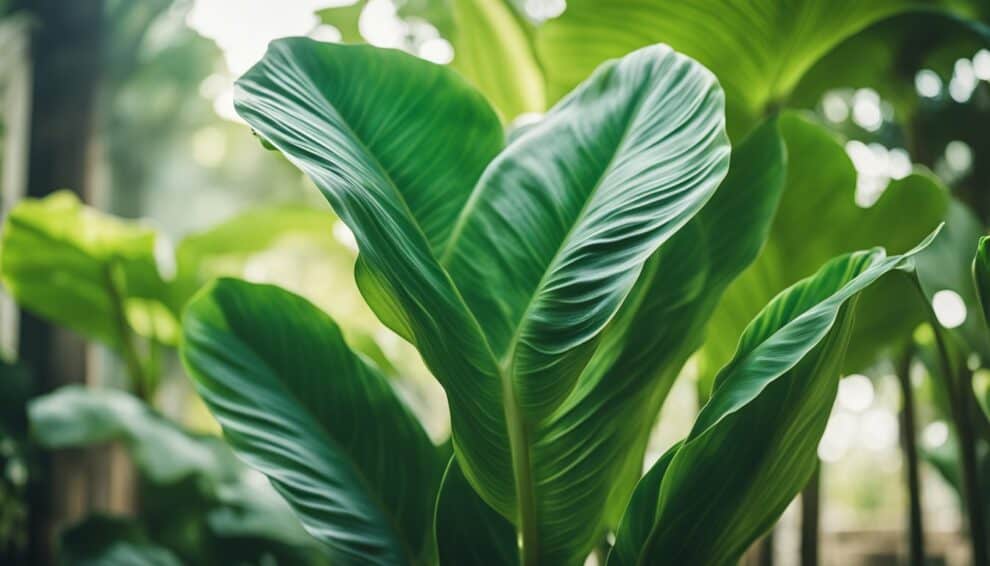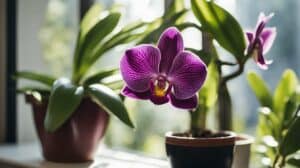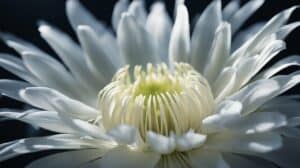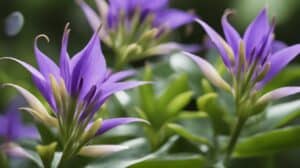The Elephant Ear Plant, scientifically known as Colocasia, is a majestic foliage plant that is popular among garden enthusiasts.
Its large, heart-shaped leaves and striking colors make it a standout addition to any garden or indoor space.
This plant is native to Southeast Asia and is a member of the Araceae family.
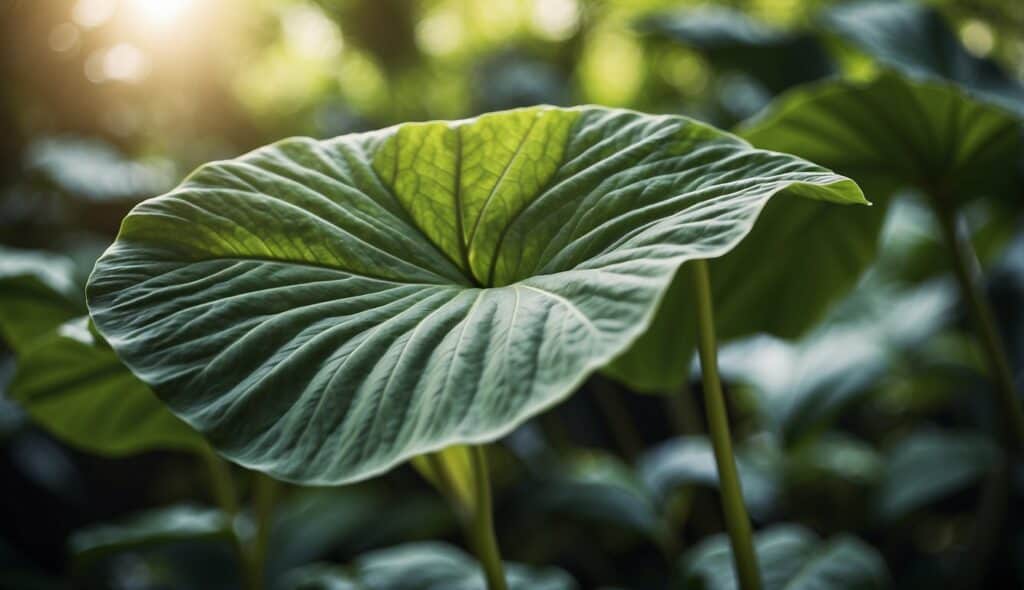
The Elephant Ear Plant is a versatile plant that can thrive in a variety of conditions. It can be grown in full sun or partial shade and prefers moist soil.
This plant is known for its fast growth and can reach up to six feet in height in just one season.
Its leaves come in a range of colors, from deep green to purple-black, and some varieties even have striking patterns.
With its impressive size and unique appearance, the Elephant Ear Plant is sure to make a statement in any setting.
Understanding Elephant Ear Plants
Botanical Profile
Elephant Ear Plant, scientifically known as Colocasia, is a tropical plant that belongs to the Araceae family.
The plant is native to Southeast Asia and is known for its large, heart-shaped leaves that resemble elephant ears, hence the name.
The leaves of the plant can grow up to 3 feet long and 2 feet wide, making it an impressive foliage plant.
The plant is grown for its ornamental value and is commonly used in landscaping and indoor gardening.
Elephant Ear Plants prefer warm, humid environments and can thrive in partial shade or full sun.
Varieties of Colocasia
There are several varieties of Colocasia, each with its unique characteristics. Some of the popular varieties include:
-
Colocasia esculenta: This is the most common variety of Colocasia and is widely grown for its edible corms.
The leaves of the plant are green and have a glossy texture.
-
Colocasia gigantea: As the name suggests, this variety of Colocasia is known for its giant leaves that can grow up to 4 feet long and 3 feet wide.
The leaves are green and have a velvety texture.
-
Colocasia fontanesii: This variety of Colocasia is known for its purple stems and dark green leaves.
The leaves have a wavy texture and can grow up to 2 feet long.
-
Colocasia affinis: This variety of Colocasia is known for its small size and is commonly grown as a houseplant.
The leaves are green and have a matte texture.
In conclusion, Elephant Ear Plants are a fascinating addition to any garden or indoor space.
With their large, impressive leaves and unique characteristics, they are sure to grab attention and add a touch of tropical beauty to any setting.
Cultivation and Care
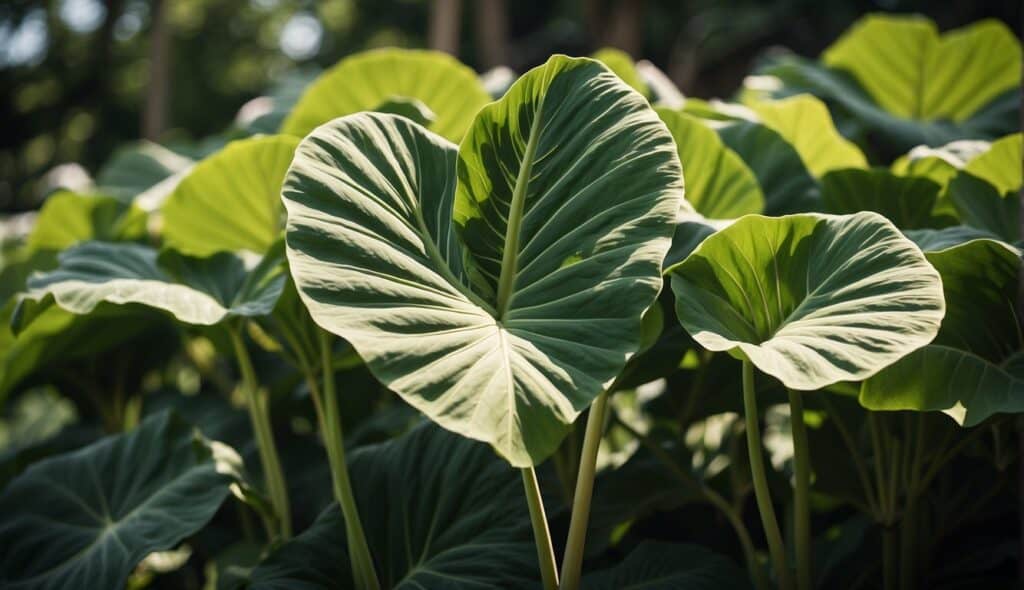
Planting Guidelines
The Elephant Ear Plant, also known as Colocasia, is a tropical plant that grows best in well-draining soil with a pH level between 6.0 and 7.5.
When planting, it is important to choose a location that receives partial to full sunlight.
The plant should be placed in a hole that is twice the size of the root ball and should be watered thoroughly after planting.
Watering and Nutrient Requirements
The Elephant Ear Plant requires regular watering, especially during the growing season. The soil should be kept moist but not waterlogged.
It is recommended to water the plant once a week, but this may vary depending on the climate and soil conditions.
Fertilizer should be applied every two weeks during the growing season to promote healthy growth and foliage.
Climate and Temperature Preferences
The Elephant Ear Plant thrives in warm and humid environments, with a temperature range between 65°F and 85°F.
It can tolerate cooler temperatures but may become dormant if exposed to temperatures below 50°F.
In colder climates, the plant can be grown indoors or in a greenhouse.
Overall, the Elephant Ear Plant is a low-maintenance plant that can add a touch of tropical beauty to any garden or indoor space.
With proper care and attention, this majestic foliage can thrive and bring joy to its caretaker for years to come.
Design and Landscaping with Elephant Ear Plants
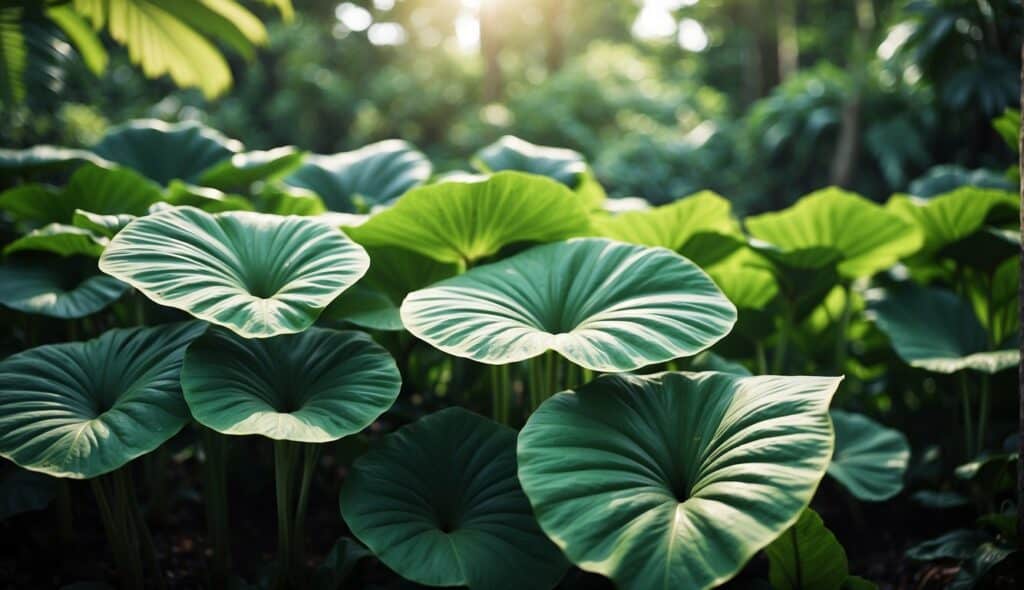
Aesthetic Appeal and Placement
The Elephant Ear Plant, also known as Colocasia, is a stunning foliage plant that can add a tropical feel to any garden or landscape.
Its large, heart-shaped leaves come in a range of colors, from deep green to purple-black, and can grow up to 3 feet long.
Because of its size and unique appearance, the Elephant Ear Plant can be used as a focal point in a garden or as a backdrop for other plants.
When it comes to placement, Elephant Ear Plants thrive in moist, well-drained soil and partial shade.
They can be planted in containers, as a border plant, or as a specimen plant in a larger garden.
They also work well near water features, such as ponds or streams, as they evoke a lush, tropical atmosphere.
Companion Plants and Design Ideas
The Elephant Ear Plant can be paired with a variety of companion plants to create a stunning garden design. Some great options include:
-
Ferns: Ferns have a similar tropical feel and thrive in the same conditions as Elephant Ear Plants.
They can be planted around the base of the Elephant Ear Plant to create a lush, layered look.
-
Hostas: Hostas have a similar leaf shape and come in a range of colors, from green to blue to variegated.
They can be planted alongside Elephant Ear Plants to create a striking contrast.
-
Cannas: Cannas have large, colorful flowers that complement the Elephant Ear Plant’s foliage.
They also thrive in moist, well-drained soil and partial shade.
When designing with Elephant Ear Plants, consider using them in groups of three or more to create a dramatic effect.
They can also be used to create a tropical-themed garden by pairing them with other exotic plants, such as palms or bird of paradise.
Overall, the Elephant Ear Plant is a versatile and stunning addition to any garden or landscape design.
With its unique foliage and ability to thrive in a range of conditions, it’s no wonder why this plant has become a favorite among gardeners and landscapers alike.
Common Challenges and Solutions

Pest and Disease Management
Like any other plant, the Elephant Ear Plant is susceptible to pests and diseases.
Some common pests that might infest the plant are spider mites, aphids, and mealybugs.
In case of an infestation, it is important to act fast to prevent the pests from spreading to other plants.
One solution to manage pests is to use insecticidal soap or neem oil.
These are natural insecticides that are effective in controlling pests without harming the plant.
It is important to follow the instructions on the label and apply the insecticide as directed.
Diseases that might affect the Elephant Ear Plant include bacterial leaf spot, fungal leaf blight, and root rot.
To prevent diseases, it is important to keep the plant healthy by providing adequate water, sunlight, and nutrients.
If the plant is already infected, it is important to remove the affected leaves and dispose of them properly.
Fungicides can also be used to control fungal diseases.
Handling Overgrowth and Propagation
The Elephant Ear Plant is known for its fast growth and can quickly outgrow its container or garden bed.
To manage overgrowth, it is important to regularly prune the plant and remove any dead or damaged leaves.
Propagation is also an option for those who wish to expand their collection of Elephant Ear Plants.
One way to propagate the plant is by dividing the rhizomes.
This can be done by carefully removing the plant from its container or garden bed and separating the rhizomes with a sharp knife.
Another way to propagate the plant is by taking stem cuttings. This involves cutting a stem from the plant and planting it in a pot with well-draining soil.
It is important to keep the soil moist and provide the cutting with adequate sunlight until it develops roots.
In conclusion, managing pests and diseases and handling overgrowth and propagation are important aspects of caring for the Elephant Ear Plant.
With proper care and attention, the plant can thrive and add a touch of majesty to any garden or indoor space.
Frequently Asked Questions
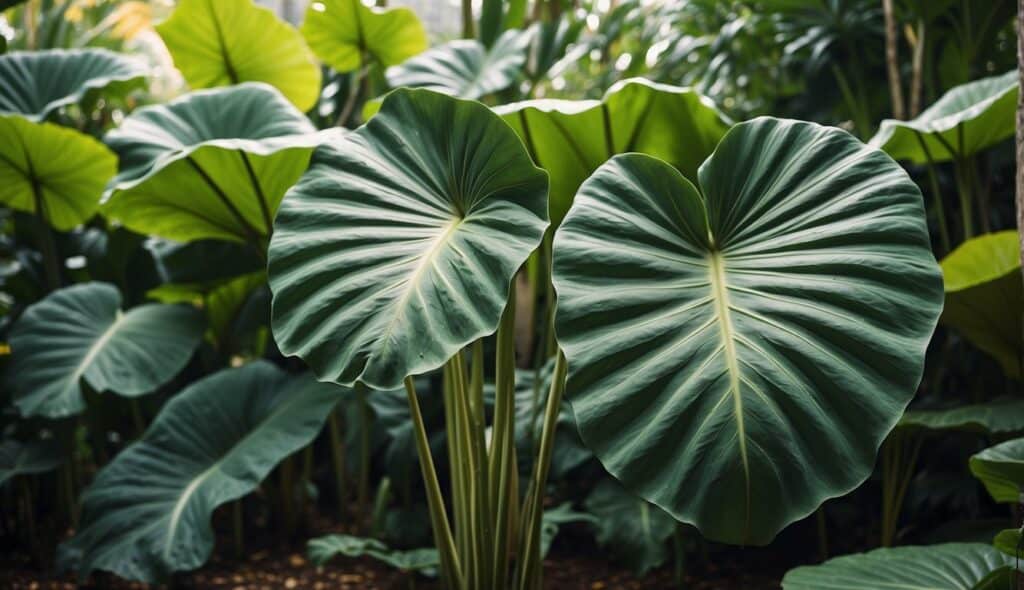
How do you properly care for a Colocasia elephant ear plant?
Colocasia elephant ear plants require moist soil and bright, indirect light. They also prefer warm temperatures and high humidity.
It’s important not to overwater the plant, as this can lead to root rot.
Fertilizing once a month during the growing season can also help keep the plant healthy.
What are the different types of elephant ear plants suitable for indoor cultivation?
There are several types of elephant ear plants that can be grown indoors, including Colocasia esculenta, Alocasia macrorrhizos, and Xanthosoma sagittifolium.
These plants can add a tropical touch to any indoor space.
Can you showcase the various elephant ear plant species with images?
Unfortunately, images cannot be included in this article.
However, a quick online search can provide a visual reference for the different types of elephant ear plants.
What are the main differences between elephant ear plants and Colocasia?
Elephant ear plants and Colocasia are actually the same plant. Colocasia is the scientific name for the elephant ear plant genus.
However, there are different varieties of Colocasia that can vary in size, leaf shape, and color.
Do elephant ear plants perennially return each year?
Elephant ear plants are typically grown as annuals in colder climates, as they cannot survive frost.
However, in warmer climates, they can be grown as perennials and will return each year.
What should one consider before growing elephant ear plants in terms of advantages and challenges?
One advantage of growing elephant ear plants is their unique and striking foliage. They can also add a tropical feel to any garden or indoor space.
However, they do require specific growing conditions and can be susceptible to pests and diseases.
It’s important to research and understand the specific needs of the plant before growing it.






